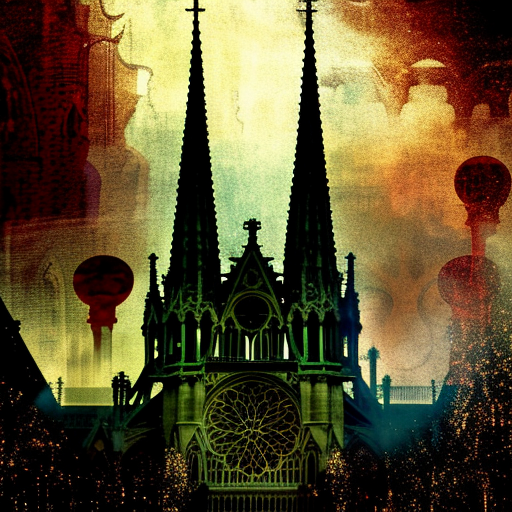Summary:
In Victor Hugo’s classic novel, “The Hunchback of Notre-Dame,” the story revolves around the tragic life of Quasimodo, a deformed bell-ringer who lives in the famous cathedral of Notre-Dame in 15th-century Paris. The book explores themes of love, obsession, and the power of fate, while also providing a vivid depiction of medieval Paris and its societal divisions.
The story begins with the introduction of Quasimodo, a hunchback with a kind heart who is appointed as the bell-ringer of Notre-Dame by his adoptive father, Claude Frollo, the archdeacon of the cathedral. Quasimodo’s life takes a dramatic turn when he falls in love with a beautiful gypsy girl named Esmeralda, who is also desired by Frollo and the captain of the King’s Archers, Phoebus.
As Quasimodo’s love for Esmeralda grows, he becomes entangled in a web of jealousy, betrayal, and tragedy. Frollo’s obsession with Esmeralda drives him to commit heinous acts, including attempting to rape her and ultimately condemning her to death. Quasimodo, fueled by his love for Esmeralda, fights to save her from her impending execution, leading to a climactic and heartbreaking conclusion.
Medieval Paris and Societal Divisions:
One of the key themes in “The Hunchback of Notre-Dame” is the vivid portrayal of medieval Paris and its societal divisions. Hugo paints a detailed picture of the city, describing its architecture, streets, and the stark contrast between the opulent palaces of the nobility and the squalid dwellings of the poor. The book explores the stark divide between the upper and lower classes, highlighting the injustices and inequalities that existed during that time.
Love, Obsession, and Fate:
Another central theme in the novel is the exploration of love, obsession, and the power of fate. Quasimodo’s love for Esmeralda is pure and selfless, contrasting with Frollo’s twisted and possessive obsession. The book delves into the destructive nature of obsession and the tragic consequences it can have on individuals and those around them. Additionally, the concept of fate plays a significant role in the story, as the characters’ lives are shaped by forces beyond their control.
The Power of Beauty and Acceptance:
“The Hunchback of Notre-Dame” also explores the power of beauty and acceptance. Quasimodo, despite his physical deformities, possesses a beautiful soul, while Esmeralda’s beauty captivates all who encounter her. The book challenges societal norms and prejudices by emphasizing the importance of looking beyond appearances and accepting others for who they truly are.
- The novel provides a vivid depiction of medieval Paris and its societal divisions.
- It explores themes of love, obsession, and the power of fate.
- The book challenges societal norms and prejudices by emphasizing the importance of looking beyond appearances and accepting others for who they truly are.
“Love is like a tree; it grows of its own accord, it puts down deep roots into our whole being.” – Victor Hugo
In “The Hunchback of Notre-Dame,” Victor Hugo weaves a captivating tale of love, obsession, and tragedy set against the backdrop of medieval Paris. The novel not only provides a vivid depiction of the city and its societal divisions but also explores timeless themes that resonate with readers today. Through the characters of Quasimodo and Esmeralda, Hugo reminds us of the power of love, the destructive nature of obsession, and the importance of acceptance. Ultimately, “The Hunchback of Notre-Dame” is a poignant and thought-provoking masterpiece that continues to captivate readers with its timeless themes and unforgettable characters.












